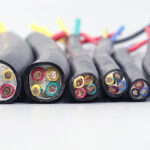Explore the longest 330kV cable laying site in China
Dancing a 700 meter long ultra-high voltage AAAC Cable that is thick at the mouth of the bowl and runs 3 kilometers underground, what are you doing? How many people will that take? How fierce is that? How hard is it to control? On May 27, with a series of questions, the author came to … Read more

